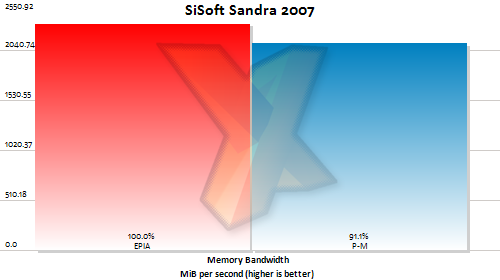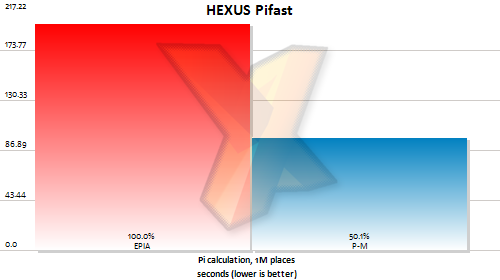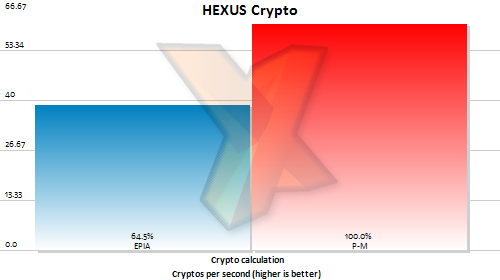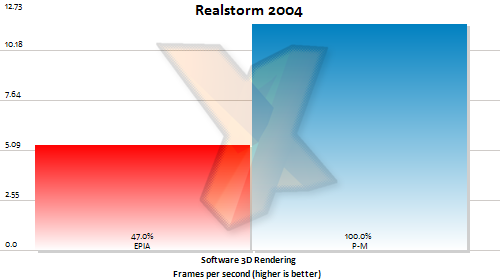Synthetic Benchmarks
Memory bandwidth first. Remember both systems have single-channel memory controllers and the same memory controller connection (100MHz, quad-pumped), limiting bandwidth to the CPU to 6400MB/sec max, theoretically.Memory Bandwidth

The EPIA manages a slender lead, largely thanks to the extra memory clock (533MHz effective, versus 400MHz effective on the P-M system). The EPIA around 50% efficient at our test settings, which is slightly anaemic for a modern memory controller.
HEXUS Pifast
We ask the CPU's FPU to pair with whatever memory bandwidth there is in order to do well in our Pifast test.
Lower is better, the Pentium-M at the same clocks twice as fast as the EPIA. Some of that is down to the L2 cache size, of course, but there's a chunk of that performance missing because the C7 isn't as able per clock, compared to Banias P-M.
HEXUS Crypto

Colours are swapped here (we'll fix when we can), P-M on the right. The Esther at 1.3GHz musters up around 65% of the performance of the identically clocked Banias. This test is cache-agnostic, running at what equals full speed on the Esther.
Realstorm 2004

Here the EPIA is even worse, dropping to 47% the performance of the Pentium-M at the same clocks. Cache size plays a significant part in this test, history tells us, so Esther's makeup hurts it here.
Summary
While VIA's C7 'Esther' core undoubtedly met its design goals in terms of clock scaling due to 90nm and power consumption due to its processing core, it remains, clock-for-clock, some distance behind processors released over three years ago that consume not much more. A 1.3GHz Pentium-M is a 22W part, max, and while the entire EPIA as configured, using its on-board graphics, is less than that (!), you certainly do trade off performance for heat output and power consumption with a modern EPIA platform, even when powered by the C7.It's a slow CPU in general terms, there's no getting away from that. We're working on a benchmark that shows off the crypto performance of C7 though, and initial tests are promising. Simple Encrypt/Decrypt tests using the Wincrypt API and AES algorithm really do blow P-M out of the water at the same clocks. But until the app is finished we'll hold off on the full gamut of results.
Observational Benchmarks
Our time with the EPIA CN13000 was limited, so we didn't get to do the video playback analysis we liked. MPEG-2 playback performance using CN700 and the 1.3GHz C7 'Esther' was pleasingly smooth, even at 720p at decent bitrate. So the EPIA CN13000 will be decent for a DVD player replacement project, and quick testing with Windows MCE 2005 shows it keeps the OS's UI responsive even at 720p, and that's with the UniChrome Pro IGP.









